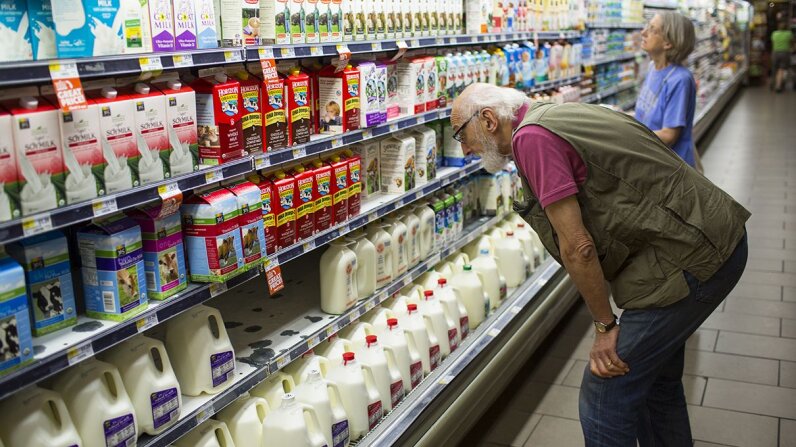 |
| The difference in fat content between whole, 2 percent, 1 percent and fat-free milk may not be what you assume. |
 |
| A 1960s-era family pours milk to drink with their dessert. |
Whole Milk
What 'Percentage' Is Whole Milk?
BY LAURIE
L. DOVE
When you're at the grocery store, do you quickly
grab a gallon of whole milk — or do you take a moment to peruse the options?
From whole milk to 2 percent, to 1 percent to
skim, dairy consumers can practically customize their daily intake before they
ever pour a glass of that creamy cow juice.
But how much fat is in a cold, frothy glass of
whole milk?
The term "whole milk" actually refers
to milk in its most unadulterated form — and in addition to the fat found in
milk, the main component (about 87 percent) is water.
You'll also find vitamins, minerals, sugars like
lactose and proteins like caseins and whey proteins.
Although it has been processed and homogenized,
whole milk is still close to what the cow produced.
But let's get back to that milk fat. The
percentage listed on a milk carton label actually represents how much fat the
milk contains by weight.
For instance, milk labeled "2 percent"
is 2 percent milk fat by weight — not 2 percent the amount of fat found in
whole milk.
If we're talking percentages, whole milk is not
100 percent fat — cow milk contains 3.25 to 3.5 percent milk fat, which equals
about 8 grams of fat per 8 ounces (237 milliliters) of milk.
In fact, the Food and Drug Administration (FDA)
mandates that the milk fat percentage by weight in whole milk should not fall
below 3.25 percent, far below the 100-percent milk fat the name "whole
milk" may imply.
Two percent milk, 1 percent milk and skim milk
have been stripped of milk fats to varying degrees — but to understand how
those milks relate to whole milk, you've got to remember that whole milk could
be called "3.5 percent milk" or "3.25 percent milk."
So, 2 percent milk has about 60 percent the
amount of fat as whole milk, while 1 percent has about 30 percent the amount.
The monikers for milk variations may have
evolved since the days when it was delivered by hand, but that doesn't mean the
labels are any less confusing.
Voluntary nutritional labeling on milk cartons
didn't appear until 1974, when the FDA advised all foods should include
nutritional information.
In 1990, Congress implemented the Nutritional
Labeling and Education Act, which required all packaged foods to have nutrition
labeling and created a standard for terms like "low fat" and
"light."
In 2006, nutrition labels were updated to
include trans-fat content.
By July 26, 2018, an FDA mandate means milk
containers will include updated nutritional labels.
The new labels will show calories and serving
sizes more prominently, and will continue to detail total fat, saturated fat
and trans-fat on the label.
Here's hoping a simple glass of milk will have
an equally simple label to match. Cheers!
NOW THAT'S INTERESTING
In 1922, the United States Congress passed the
Capper-Volstead Act, which meant that agricultural producers, including dairy
farmers, could form an association — exempt from monopoly laws — to
collectively process, prepare and market their products.
Without it, the highly popular "Got
Milk?" campaign of the 1990s would never have existed.
Laurie
L. Dove is an award-winning journalist
who covers timely topics for HowStuffWorks. She is the author of six books and
the former owner of a newspaper and magazine. When not reporting on the latest
tech breakthrough, health advance or economic development, Dove is tracking
down hidden history, science innovations and biologic discoveries. As the
Honorable Laurie Dove, Mayor, she has brought multi-million-dollar improvements
to the small Midwest town where she lives with her husband, five children and
two Akitas.


No comments:
Post a Comment